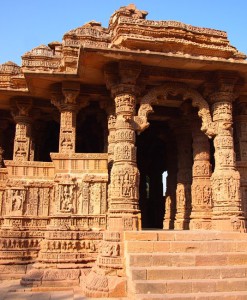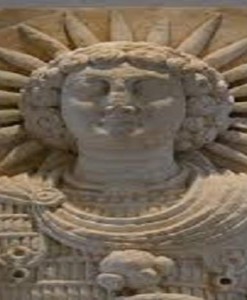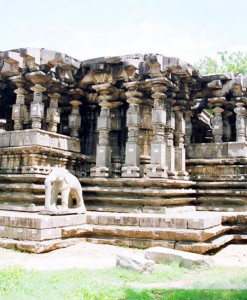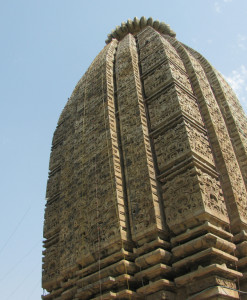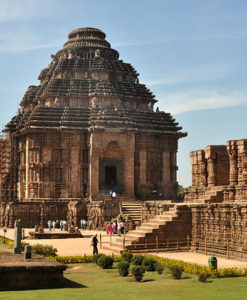No products in the cart.
Suraj Kund Sunam is a famous Hindu temple It is a large Sun temple, located to the east of Sunam city (dated to the Vedic period), about 1.5 kilometres away in the Thashil and Sub division of the Sangrur District, was destroyed by Timur or Mohammad Ghaznavi. It is also said that Saraswathi River was flowing nearby. The Suraj Kund is now in a dilapidated condition. It is situated on the Ludhiana-Hisar railway line.
- Temple History
- Architecture
- How To Reach The Temple
- Daily Poojas And Festivals
- Videos
- Additional Information
The history of Sunam goes back to the Vedic period, when its name was Surajpur. The Saraswati River is believed to have flowed by it. The modern town was built within the walls of an old fort into which its inhabitants were driven to take refuge.
It is divided into two parts, one in the citadel of the fort and the other on the lowland around it. Though now of little importance, Sunam has played a significant part in the history of the Punjab after the Muhammadan invasion; Al-Baruni mentions it as a famous place in his book ‘Kitab-ul-Hind’, 1050 AD. ‘Sunam’ in Sanskrit means auspicious name, but some say that it was named after Sona, a Gujari, who guided Muhammad of Ghor to conquer the fort of Bathinda and Asked him to give Sunam as her reward. Others accept a derivation from Sunam, which in Aravic means the hump of a camel. When Qutb-un-Din Aibak saw that the place had this shape he named it Sunam, but this etymology is untenable, as the town is said to have assumed its present shape only after Taimur’s invasion (AD 1398). Sunam was held by Hindu Rajas till conquered by Muhammad of Ghor.
Sultan Shams-ud-Din Altmash gave it to his page Sher Khan in Jagir. Ghais-ud-Din balban gave it to Timar Khan, with Samana, (now in Patiala District), on the death of his cousin Sher Khan, and subsequently conferred it on his own son Bughra Khan. Under Muhammad Shah Tughlaq, its dependent tribe revolted. Firoz Shah brought a canal through Sirhind and Mansurpur to the town in 1360, and in 1398 Taimur attacked it. It is an ancient site, and by digging 40 of 50 feet deep, statues, big bricks and bones are found. In the time of Akbar, it was a Pargana of Sirhind. During Muslim rule, Sunam was a centre of politics like Samana and Sirhind (now in Patiala District).
Baba Ala Singh, the founder of the erstwhile Patiala State, had won this town from Muslim rulers. Akbar’s courtier Abul Fazal has recorded in his Ain-i-Akbar ri that Emperor Akbar often came to Sunam on hunting expeditions.
The Suraj Kund named after the Sun God is surrounded by verandahs on all sides. Ashes of cremated people are immersed in the water flowing out of the kund by those who cannot go to the Ganges for this ritual. In one corner of the kund, the ‘Linga’ or shrine of Lord Shiva is placed. The other two Kunds are the Sita Kund and the Bharat Kund. There are now three small temples at this place. The Suraj Kund is now in a dilapidated condition.
By Road: Sunam has a strong network of private and public sector bus services. Hence it can very conveniently be reached from important cities like Punjab, Himachal Pradesh, Delhi, Haryana, Jammu and Kashmir.
By Rail: The nearest railway station is Sunam.
By Air: Sunam does not have an airport. Nearest airport is Ludhiana Airport. (82 km)
The Temple is open from 7:00 AM to 8:00 PM. Daily rituals dedicated to Lord
Sun are performed.
SITASAR:
It is an ancient tank spread over 80 bighas. It is said that Sita, wife of Lord Rama, washed her hair in this tank when she was turned out of the house by Rama. Even now the widows of nthe surrounding area come here and wash ltheir hair. It is also said that at one time kumb fair of the Punjab was held here. The tank is, now, not in good condition. Shiv Mandirs have been built in the south west and north of the tank. A small Shitla Mata Mandir has also been built in the south of the tank in which an ancient idol of Mata has been installed. This tank, it is said, was filled with the water of River Saraswati. (The Geographical Dictionary of Ancient And Mediaeval India 1927) “The Mubarak Shahi gives us some idea of “Firuz Shah’s” canal digging activity during this period. “The river Sarsati” (Saraswati) comes from the great mountains and falls into the Sutlej. An earthen hillock near a place called Barwar, Firuz was informed, separated the River Saraswati from the Salima canal (of Firuz Shah). If this hillock was dug up, the water of the Saraswati would flow into the canal which could then be taken to Sahrind or Sirhind, Mansurpura and further on to Sunam. Firuz went to the place and began digging up the hillock.”



